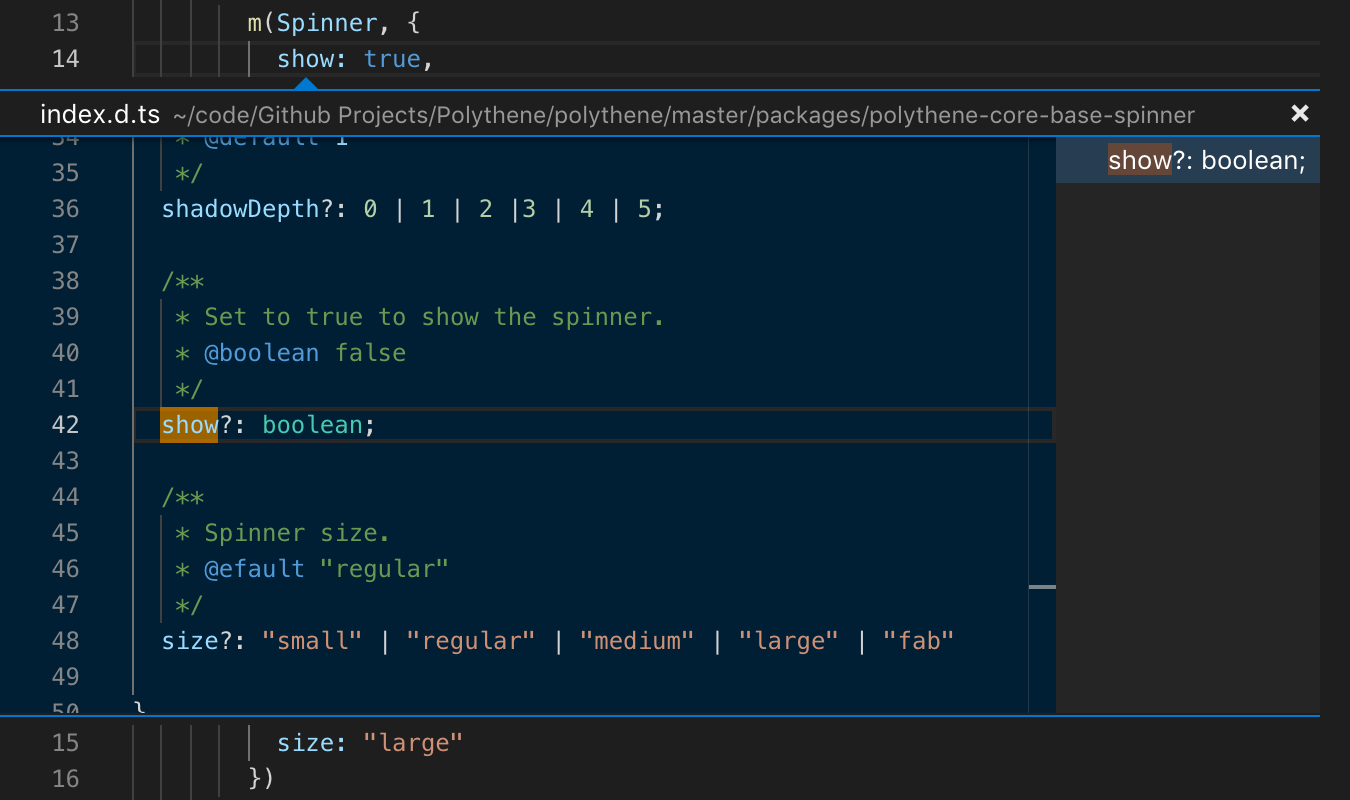TypeScript support is available for all Polythene components. The type definitions help to ensure that only valid component options are selected.
Code editors like Visual Studio Code let you peek into the component's type definition.
When creating a wrapper component, you can create a type definition to extend the Polythene component interface.
This example shows a custom Button component that extends the Polythene Button interface to accept a new option showCustomColor.
// my-button.js
import m from "mithril"
import { Button } from "polythene-mithril"
import { ButtonCSS } from "polythene-css"
ButtonCSS.addStyle(".custom-color", {
color_light_background: "#FF1744",
color_light_text: "#fff"
})
interface MyButtonAttrs extends Partial<Button> {
showCustomColor: boolean
}
const MyButton = ({ attrs: { showCustomColor, ...otherAttrs }} : { attrs: MyButtonAttrs }) => {
const className = showCustomColor
? "custom-color"
: ""
return {
view: () =>
m(Button, {
...otherAttrs,
className,
})
}
}
export default MyButton
// app.js
m(MyButton, {
showCustomColor: true,
label: "Custom"
})// my-button.js
import React from "react"
import { Button } from "polythene-react"
import { ButtonCSS } from "polythene-css"
ButtonCSS.addStyle(".custom-color", {
color_light_background: "#FF1744",
color_light_text: "#fff"
})
interface MyButtonProps extends Partial<Button> {
showCustomColor: boolean
}
interface MyButtonState {
// no state used here
}
export default class MyButton extends React.Component<MyButtonProps, MyButtonState> {
render() {
const { showCustomColor, ...otherProps } = this.props
const className = showCustomColor
? "custom-color"
: ""
return <Button {...otherProps} className={className} />
}
}
// app.js
<MyButton showCustomColor label="Custom" />
